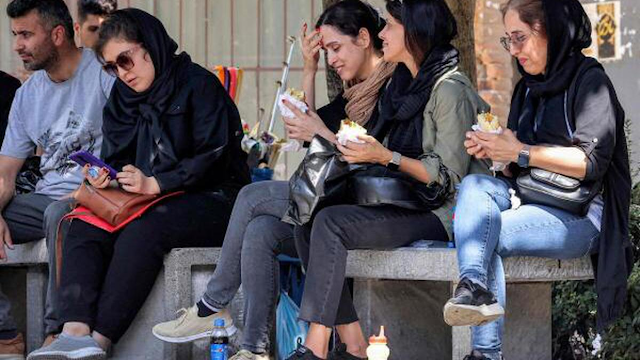Iran's Parliament Approves Stricter Headscarf Law in Wake of Protest Anniversary
In a move that has sparked both controversy and concern, Irans parliament has passed a stricter headscarf law just days after the anniversary of widespread protests that gripped the nation. This development underscores the Iranian government's ongoing efforts to exert control over the dress code and social behavior of its citizens, particularly women.
The newly passed legislation imposes stricter penalties for those who fail to adhere to the government's dress code, which mandates that women cover their hair with a headscarf and wear modest clothing. Under the new law, repeat offenders could face harsher consequences, including fines and imprisonment. Additionally, employers and business owners could be held responsible for their employees' dress code violations.
The timing of this legislation, coming just days after the anniversary of nationwide protests, raises questions about the government's motives. It was in December 2017 that a series of protests erupted across Iran, with many women taking off their headscarves in public as a symbol of defiance against the mandatory dress code. Dubbed the "Girls of Revolution Street," these women inspired a movement for greater personal freedom and individual choice in Iran.
The anniversary of these protests serves as a reminder of the ongoing tension between the Iranian government and its citizens, particularly women who seek greater autonomy over their bodies and choices. Critics argue that the new law is a direct response to the persistent resistance against the compulsory hijab, an attempt to stifle dissent, and further restrict personal freedoms.
Iran has seen a consistent struggle between the government's conservative policies and the desire of many citizens for increased personal freedoms. While some individuals adhere to traditional Islamic dress codes voluntarily, others believe that such dress codes infringe upon their rights and limit their individual expression.
In recent years, there has been a growing movement within Iran advocating for greater personal liberties, including the right to choose whether or not to wear the headscarf. This movement, led by brave women who have risked arrest and punishment, seeks to challenge the status quo and promote a more inclusive and open society.
The passing of a stricter headscarf law in Iran, especially in the aftermath of the protest anniversary, highlights the ongoing struggle between the government and citizens over issues of personal freedom and choice. While the law may tighten government control over dress codes, it is unlikely to quell the desire for greater autonomy and individual expression among many Iranians, particularly women. The tension between state-imposed restrictions and personal freedoms remains a defining feature of Iran's sociopolitical landscape, one that continues to evolve as its citizens push for change.



Comments
Post a Comment